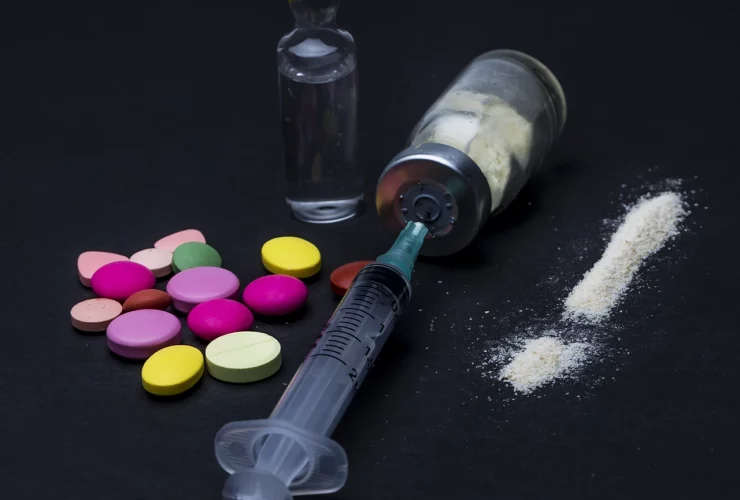Heroin Addiction and Abuse in Canada
Before the recent Coronavirus pandemic, heroin addiction and abuse were pressing national issues. Between 2016 to 2018, Canada recorded a death toll of 11,500 heroin patients, making it a national concern. At one point, the national advisory committee on the opioid pandemic recorded about 8 deaths a day.
Heroin is a Schedule I drug. This means it has a high addiction and abuse potential. For this reason, there is strict regulation and control of the substance by the appropriate authorities. Despite this level of regulation, the production and distribution of heroin in Canada is still at an all-time high.
In this blog, we’ll focus on the reason for the increase in heroin addiction and abuse in Canada. In doing so, we’ll also take a closer look at the heroin public health crisis in Canada.
Heroin Addiction and Abuse in Canada: The Stats and Facts
Heroin is a substance that relieves patients of critical pain during accidents and surgery. Because of its highly addictive property, there is a restriction on its prescription and medical use.
Whether you’re using heroin illegally or under medical supervision, long-term use can graduate to addiction. When under medical supervision, patients who become heroin addicts are referred to as prescription addicts. Prescription addiction occurs mildly but slowly. Often, it ends with complete dependence on the substance.
Against popular belief, complete dependence is different from addiction. Complete dependence occurs when your body fails to function properly without heroin. Mostly, this happens, because you have developed a high tolerance level for heroin.
Over the past year, heroin addiction and abuse in Canada has become a more serious issue. This period coincided with the pandemic and came with an increase in heroin overdose-related deaths.
In May 2020, Canada recorded 174 overdose-related deaths. In June, that number was 177. In total, 2020 ended with a total death toll of 909. Experts say this high increase in heroin overdose cases is due to:
Closed borders
Closed borders and travel restrictions have left local dealers mixing illegal drugs with additives. Typically, heroin is a white bitter-tasting substance. But to increase profits, local dealers mix it with salt, sugar or even flour. Since these substances are white, it’s difficult to say for sure if a batch of heroin has any additives.
Fentanyl is a common substance dealers mix with heroin. Fentanyl as a substance has higher potency and is 40 times stronger than heroin.
When you take a mix of heroin and Fentanyl, chances are you will get high easily. If you don’t gauge your dosage, you may suffer an overdose which can be fatal.
Clash in guidance between the pandemic and addiction
Since the pandemic, there have been so many guidelines put in place to curb the spread of the Coronavirus. Social distancing and isolation are two of such measures.
Isolation in particular fueled the already high cases of heroin addiction across Canadian states. Experts say the Canadian government did not give both pandemics the right approach. The Canadian government treated the COVID-19 pandemic urgently. This left room for the heroin crisis to thrive.
Medically, a common cause of addiction is loneliness. Even while treating heroin addiction, specialists tackle loneliness and the feelings that come with it. To avoid loneliness and keep addicts positively engaged, heroin addiction treatment programs include holistic activities.
However, due to the pandemic, stay-at-home protocols had to be implemented. This means at-risk individuals spent more time alone than ever before. Loneliness translates to feelings of depressions and anxiety — both of which are contributing factors to heroin abuse.
Heroin Abuse Statistics in Canada
Although seen mildly, heroin addiction and abuse in Canada is not one to treat lightly. As of 2019, more than half the population of Canada felt it was a crisis.
Experts say heroin abuse is more common among males than females. Other experts claim that heroin addiction is geographical. Here’s why
In British Columbia, 19% of the population testified to using heroin at least once in a lifetime. On the other hand, only 5.6% of people living in Prince Edward Island have used heroin. The numbers also say heroin addiction is responsible for most drug-related deaths with over 12 deaths per 100,000 in British Columbia.
Here is a breakdown of stats and figures of heroin addiction in Canada.
- 14.8% of the Canadian population have used the drug at one point or the other.
- 53.8% of men have used the drug at least once in their lifetime.
- 0.08% of the female population have used the substance within their lifetime.
- 7% of grade 7 to 9 students used the substance between 2018 and 2019.
- Ontario is the providence with the highest number of heroin overdose deaths.
- 75% of overdose deaths in Yukon involved fentanyl.
- People in the age bracket 30-39 years had the highest share in opioids overdose death.
- British Columbia is the providence with the highest number of drug-related offences.
Related Article: Various Effects of Heroin on the Body
A Closer Look at Heroin Health Crisis in Canada
Daily, there is an increase in the number of addiction cases in the country. This will mean a wide prevalence of heroin addiction in Canada. Here’s why this is happening:
- A lack of comprehensive care to meet the physical and mental need of addicts
- A common misunderstanding of the addictive risk of heroin.
- Disesteem towards heroin use disorders.
- Illegal lacing of heroin with substances like fentanyl.
- Reduced access to prescription heroin drugs leading to illegal use.
- Lack of awareness on other safe ways of reducing pain
- Lackadaisical patient behaviour. For instance, allowing other family members to use the drug.
Asides from all of these, there are risk factors that increase the chances of heroin addiction. These are:
Genetics
Genetics can overwhelm your willpower to abstain from drugs. The National Institute on Drug Abuse says most addiction patients have family histories of addiction. With a family history of addiction, access to heroin can lead to addiction and eventual dependence.
Environment
For people without positive guidance, there’s a greater risk of heroin addiction. Even adults abuse prescription drugs, how much more young persons?
Another environment-related factor to consider is the positive or negative situation of things. If you’re dealing with trauma or stressful problems, it’s easy to seek solace in heroin or other addictive substances.
Peer pressure
Peer pressure is one of the leading factors for heroin addiction, especially among young people. It is common to find young people trying new stuff. As such, the availability of heroin among your peers will increase your chances of becoming an addict too.
Early use
Early use is another risk factor for heroin addiction. Research by the National Institute on Abuse shows that most addicts are between 18 and 25 years of age.
Irrespective of age, heroin addiction and abuse alter brain function. This means younger users are prone to psychological disorders that can encourage heroin abuse patterns.
Method of use
Heroin is generally taken either as a powder or as a liquid. If you snort heroin, you’ll feel the effect faster compared to injections. The stronger the effect, the faster your body builds up a tolerance.
Consequently, you’ll start taking more of the substance to achieve the same psychoactive effects. This is a fast route to addiction and dependence.
Drug of Choice
While some people dabble in heroin abuse, others abuse it heavily. Sometimes, people in the second group go as far as mixing heroin with other substances.
In the long run, these additives can increase the chances of abuse and addiction. Some common substances people mix with heroin are alcohol and fentanyl.
Related Article: This is What Happens When You Forfeit Your Life to Heroin Addiction
To Wrap It Up
Numbers don’t lie. From the breakdown above, it’s obvious that heroin addiction and abuse in Canada is a national issue. In recent years, experts have linked the increase in heroin addiction cases to the border closure and strict social distancing guidelines.
Furthermore, the mixing of heroin with other substances has been linked to the national crisis. Fentanyl, the most common substance dealers mix with heroin, is more potent than heroin. Because fentanyl production is cheap and easy, its availability on the street is abundant.
In all of this, the government and addiction treatment services must work together to ebb the heroin addiction crisis. Discuss with our experts at Inspire Change Wellness Addiction Treatment Center for Men to see how we are working to battle this public health crisis.





